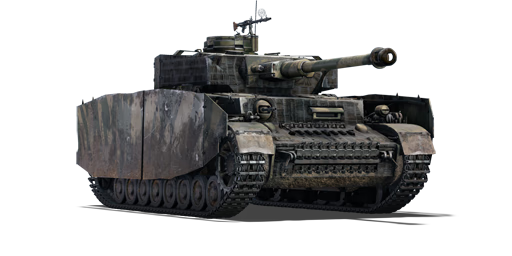The Panzerkampfwagen IV Ausführung H (Panzer IV H) (Sd.Kfz. Index: Sd.Kfz. 161/2) is the eighth variant of the Panzerkampfwagen IV medium tank family. The introduction of the long-barrelled 7.5 cm gun-armed Panzer IV G substantially altered the employment of the Panzer IVs within the German Wehrmacht. In 1942, the long-barrelled 75 mm Kampfwagenkanone (KwK) 40 L/43 tank gun were more than capable of dealing with the majority of tanks on the battlefield. Better armoured Panzer IVs were proposed due to their exceptional performance on the battlefield. This would result in the Panzer IV H variant being introduced. It was essentially the same vehicle as the Panzer IV G variant, with minor changes to simplify the manufacturing process and reduce production time. The Panzer IV H would become the ultimate backbone of the German Wehrmacht Panzer divisions from 1943 until the end of World War II due to its large numbers, firepower, and enhanced armour. From May 1943 onwards, the Panzer IV H, like many other German armoured vehicles, received 5 mm side skirt armour plates upgrades known as Schürzen. Their primary function was to provide protection against Soviet anti-tank rifles. Six thin armour plates were installed on either side of the Panzer IV H hull. Additional armour plates were added to entirely encase the turret, leaving only the front open for the main gun. In addition, the Panzer IV H was outfitted with a slightly modified 75 mm KwK40 L/48 tank gun. This gun has a slightly longer barrel than the previous Panzer IV G variant's 75 mm KwK40 L/43 tank gun, which offered slightly better armour-penetrating capability. Finally, it was the only Panzer IV type that received the Zimmerit anti-magnetic paste modification. While it was intended to be applied largely to the tank's flat surfaces, some tank crews just smeared the paste all over the tank. While newly manufactured tanks were applied with the paste at the factory, tank units were given the necessary equipment to do it on the battlefield by themselves as well.
Introduced in the Closed Beta Test for Ground Forces before Update 1.41, the Panzer IV H variant is a significant step forward from the Panzer IV G variant. The addition of 5 mm side skirts, known as Schürzen, is the most noteworthy difference. However, they were easily lost during conflicts, and this is accurately reflected in the game. Furthermore, firepower has been slightly improved through the integration of a longer-barrelled KwK40 L/48 tank gun. Overall, it is a tank that plays similarly to the earlier Panzer IV F2 and Panzer IV G. However, due to the addition of Schürzen plates, which add a lot of weight to the tank, the Panzer IV H is slightly slower than the other variants.















